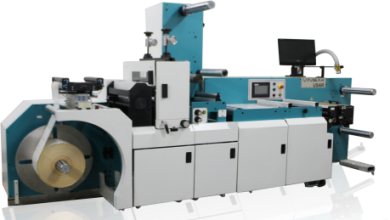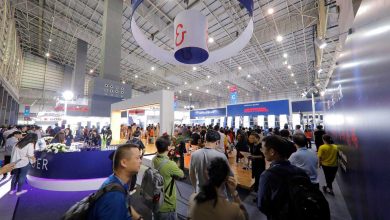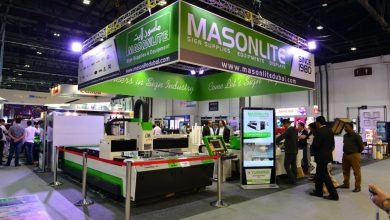SGI 2016 review and impressions
One aspect I noticed at SGI 2016 was that many distributors of past years were replaced by new distributor brand names. In other words, there were plenty of new distributors there for their first time. So there was plenty for the attendee to see, experience, and learn about.
Cutters come in every size and shape; more than a dozen were exhibited. This means that attendees had good options, from entry level into heavy-duty CNC routers. For digital flatbed cutters, Zünd and Kongsberg were present at the high end segment and an abundant diversity of CNC routers from China. A large number of CO2 laser engravers were present from China. I estimate there were almost as many cutters at SGI 2016 as there were printers.
The sheer number of booths with media and signage substrates was a surprise: about 72. There are some expos elsewhere in the world which at most have five booths with laminators. Here at SGI there were 100% more entry-level laminators than at many other expos. Other than the Kala brand (which hopefully is still made in Europe), probably 90% of the laminators come from China.
In general, the presence of Chinese brands was notable, more than I remember in past years, and their booths were in an easily accessible location.
Let’s now look at the signage printing and workflow product classes one by one.
Solvent printers
Solvent printers continue to be utilized in print shops and continue to be manufactured. Printers with full-solvent ink are rare, but mild-solvent are still common. There were several booths with solvent printers where people in nearby booths commented on the unexpectedly strong odor of the solvent inks wafting across the aisles. But none of the odors today comes anywhere near close to full-solvent of ten years ago.
I miss seeing SUV, solvent UV, but since there was never an opportunity to do a full-scale FLAAR Report, we never had the chance to detail the frankly remarkable aspects of this. At 50% of expos there is no more SUV whatsoever. Let’s hope in the future that ink chemists will unveil additional iterations which catch my interest.
Latex printers
There were no original Mimaki latex printers and no new iteration of a Mimaki latex printer either. Nor was there any innovative ink printer anywhere else at the expo: everything was standard: solvent, UV-cured, or textile printers (all water-based). HP Latex printers were in the main HP booth plus several distributors.
The reason why UV-cured ink has become an international success is that there are over 100 factories producing UV-cured printers. There are dozens of different ink companies producing several different varieties of UV-cured ink: mercury-arc cured and LED cured. One reason latex ink has not been as successful is because only one company is putting enough effort behind it: HP. HP shows latex printers no matter what. I admire the dedication and stamina of HP teams to move ahead with their latex ink concept.
Textile printers
SGI 2016 had plenty of calendering machines; Giffin Graphics had two different models of Monti Antonio. What is notable is that when I did test prints on the d-gen Teleios Grande, because the sublimation unit had so much work to do, they moved the direct-to-fabric print to one of the Monti Antonio printers and the results were bright and colorful (which is what d-gen is known for). I normally think of a calendering machine for transfer paper, so this was the first time I had seen one do an already printed fabric (I assume with disperse dye ink). Maria Renee Ayau, textile printer workflow review editor for FLAAR Reports, notes that for some polyblends, if they have 50% cotton and 50% polyester, a calendering machine can provide the additional heat that works best on the cotton aspect.
Century Star had its own booth as well, though more and more they are adding their own standard printers above their sublimation units.
There are many sizes, shapes, and price ranges of textile printers. Two of us from FLAAR Reports just attended the awesome textile expo in Milano a few months ago. But most of those printers are for clothing and upholstery, scarves and other luxury good. For a signage expo it is more appropriate to have printers for flags, banners, and soft signage. In this respect, SGI had a good range of entry-level to mid-range signage textile printers, plus is also moving into textile printers for interior design (and printers for wall coverings).
I would have enjoyed testing many of the other brands, but Andrea Negretti (Business Manager, d-gen) and Philippe G. Husni, General Manager, Heliozid Oce each know I like to do print samples of my photographs of flowers and animals of Guatemala. In other booths it takes too long to get access to the printer and some companies simply can’t accept files during a trade show.
Philippe Husni points out: there is a worldwide trend towards soft signage as it is considered cleaner and more eco-friendly both from the aspect of media (recyclable polyester vs eco-unfriendly vinyl) and from the ink point of view (water based dye sublimation vs eco-unfriendly solvent).
I have a lot more to learn about both printers (d-gen and two models named Granada in the booth of Heliozid Oce). But the print samples of each were professionally rendered. What counts significantly is the kind of cloth they print on: the better the fabric, the nicer the image.
We look forward to evaluating other textile printers in the future, preferably at their factory demo room, or at least at the demo room of the main distributor.
T-Shirt printers
I found six inkjet T-shirt printers and several booths with OKI toner-based printers for T-shirts. Mutoh had their new ValueJet 405GT, evidently with pigment ink (instead of a sublimation ink or eco-solvent ink). The Durager-600SD, a T-shirt printer from Durafos, in the Warshi Trading booth, used eco-solvent ink. In the future I would like to test the difference between using toner, pigmented ink, sublimation inks, and eco-solvent ink. Of course a lot depends on what colors and what graphic design is in your T-shirt design. Fluorescent inks also make an impact.
UV-cured printers
Key big-name international brands of UV-cured printers were present: efi Vutek, Swissqprint, Durst, Screen, Mimaki, Oce, Agfa, Jetrix, and popular brands from China, RTZ Flora, Handtop and more. Printers of most sizes and shapes were present: desktop UV (wide range from Mimaki, booth of Signtrade), mid-sized (again Mimaki), dedicated flatbed UV: Flora, Challenger and more; roll-to-roll: Flora and efi Vutek in grand-format; and other brands at entry-level sizes.
You could find both LED-cured and mercury-arc cured; efi Vutek, Durst, Jetrix, Dilli, and RTZ Flora have flown me to their printer factories so know these brands and corporate backup the best. It was unfortunate that the Dilli distributor was missing, as I would have enjoyed seeing these well-engineered Korean printers at the advent of 2016.
MEMS printhead printers
There was no Xante and no Gongzheng and no RTI Vortex Memjet printers any more on exhibit in Dubai. But Xerox had their model, and Océ had their improved Oce ColorWave 910, which is available and serviced via Heliozid Océ.
The HP booth at Sign Istanbul did a “100 meter” printout for us as a test. It was such a fabulous test print that we featured them in our FLAAR Report on Sign Istanbul. We brought files to test print at SGI but evidently the HP printer here was a tad disjointed and the special size and shape of tool to fix the minor hiccup was not in the booth, so we were not able to do any tests. Instead the team at OCE did test prints of my high-resolution photographic images. Memjet vs HP PageWide compared with KIP is a good subject for future discussion. But it is crucial to be brought to the demo room, preferably at the factory, or else at least a major regional demo center.
Other water based printers
15 years ago water-based printers filled the booths of Roland, Mutoh, Mimaki (and Encad). Then Epson decided it wanted the giclee, photo printer, and proofing market for itself, so Epson printheads for not available for water-based printers of other brands.
Then HP did so well with their water-based printers that Encad had not much future, especially since we had both brands and FLAAR Reports clearly documented that HP Designjet printers were significantly better than any and every Encad. Now, not even in China do you see many copies of Encad water-based printers.
Canon actually often has the most water-based printers of any printer expo. HP had one single Z-series water-based printer. Epson had a few but Epson wants the solvent and textile market.
After-market ink
Most ink was rebranded in the booths of the large distributors. But for us to evaluate ink, it is helpful to know which brand and thus which factory.
Even more crucial is to visit the factory at least every two years, plus to understand which ink is made in this factory, and which ink is rebranded from another ink factory elsewhere. For example, there was an ink brand in the Netherlands which made their own ink for offset and flexo or screen printing, but at one point may have bought ink from another company to sell into the inkjet market.
A company may make its own water-based and eco-solvent ink, but buy their UV ink from another factory. This is why the FLAAR Reports are preferred over press releases, because we actually visit ink factories in the USA (STS Inks), China (Hongsam), Taiwan (Jetbest), Korea (Inktec), and Singapore (Sam Ink). Plus, we visit with distributors who help us understand which inks are good, and which are disasters with clogging. The other crucial aspect to know about ink brands is that an ink that is good one year can change either gradually or suddenly to an inadequate ink if they decide to use cheaper chemical components.
Media and substrates
Whereas most ink was rebranded at SGI, most media was exhibited directly by the factory brands. However again, the same facts should be recognized. A company with a media factory in Europe may probably be importing other media from China and rebranding it. So again, we do our best to get to the factories, such as of Yeong Jeou to learn about PE (available through their brand Aria).
Laminators
The show featured a large number of laminators, including four brands of flatbed applicators (flatbed laminators). Frankly SGI in Dubai had more booths with laminators than most big international signage expos in Europe and USA.
It is important to have laminators at a printer and signage expo, because many people elsewhere say “our printer no longer needs any laminator.” But actually, laminators are just as important today as they were 5, 10, 15 years ago. So SGI did a good job providing attendees with lots of options for laminators.
Toner printers
Since many brands do not allow their sales reps to do print tests at a trade show, we were not able to evaluate any of the Xerox printers whatsoever. But the team in the Konica Minolta booth were helpful and kindly “stopped their presses” in order to print samples on the spot: plus they bound the results.
LED & LCD dynamic digital signage
LED and LCD dynamic digital signage are a challenge for expo organizers. If they are showing a movie of the Minions or Rio (macaws in Brazil) or any other cute animated film, it attracts lots of attention (away from exhibitors of printers).
If the LCD billboard booth is showing 10 meter wide images of a Korean Girls band or female models, it distracts people for several aisles. Thus it was nice that the LED and LCD dynamic digital signage presence at SGI 2016 was not disturbing people in the aisles nor in nearby booths. This is definitely an aspect of SGI which can continue to grow.
I would suggest for signage and printer expos, if they wish to have more LED and LCD dynamic digital signage, that they do this, literally, in a separate hall, as a co-located expo. That way everyone who enters this hall knows what to expect. For example, in many Chinese expos, most of the CNC routers and CO2 laser engravers are in separate halls, because the fumes from mechanical or chemical cutters are unbearable for everyone else.
Trends evident at SGI 2016
Since SGI in Dubai is the first pertinent trade show every year, literally the first international class printer expo in the world, it is helpful to see and understand what trends were noticeable.
We can definitely report that the wide-format inkjet printer business is alive and well. There were scores of brands of every size and shape of signage and graphics printer here at SGI 2016. It was also nice to see two 3D printers and toner-based printers. Most “sign and printer expos” forget, or ignore, toner-based printers. Here, again, the advantage of visiting SGI is that they have toner-based printers. It was very nice to see the well designed Konica Minolta booth with their impressive toner chemistry and printer engineering. Altogether, two of us from FLAAR Reports enjoyed being at SGI 2016. We definitely look forward to attending the 20th annual Sign & Graphic Imaging Middle East in January 2017, this time a few days later in the month (January 15-17, 2017).
In the meantime, we hope to provide additional information on the workflow and applications of wide-format inkjet printing in the pages of future issues of ME Printer magazine. And, when it is possible to interact with toner-based office and production printer companies, we would enjoy doing more evaluations of different models of Konica Minolta and other toner printers.





